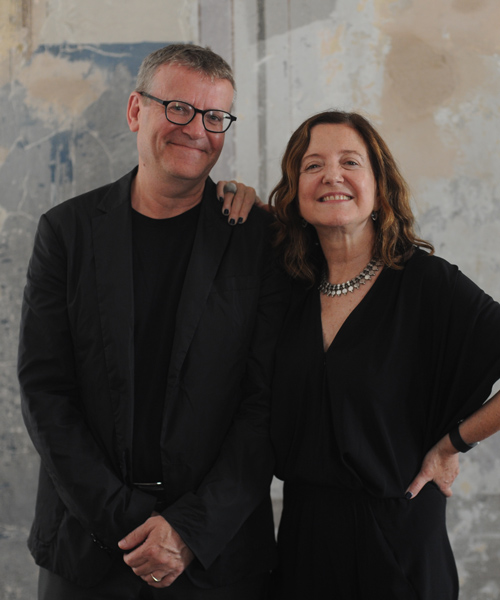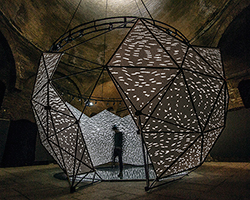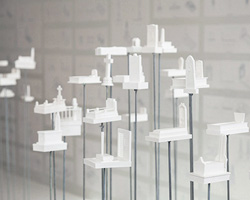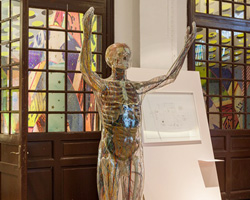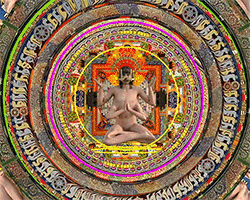istanbul design biennial: titled ‘are we human?’, the third edition of the event explores the intimate relationship between humans and design over a time period that spans from the last two seconds to the last 200,000 years. running from october 22 to november 20, 2016, the biennial presents more than 70 projects by over 250 participants, including designers, architects, artists, theorists, choreographers, filmmakers, historians and archaeologists from more than 50 countries.
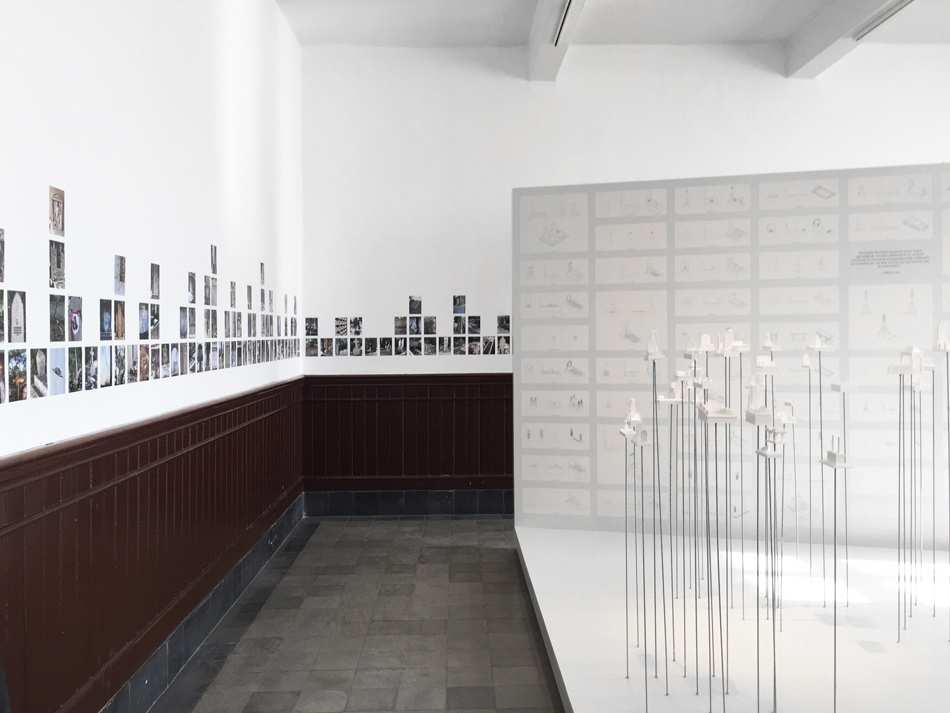
the visit by SO?
image © designboom
(portrait of mark wigley and beatriz colomina by mahmut ceylan)
organized by the istanbul foundation for culture and arts (İKSV), the istanbul design biennial is hosted across five main venues; galata greek primary school, studio-X istanbul and depo in karaköy, alt art space in bomontiada, and istanbul archaeological museums in sultanahmet. this year’s edition has been curated by architectural historians and theorists beatriz colomina and mark wigley. colomina is professor of architecture and founding director of the program in media and modernity at princeton university, while wigley is professor and dean emeritus of columbia university’s graduate school of architecture, planning, and preservation.
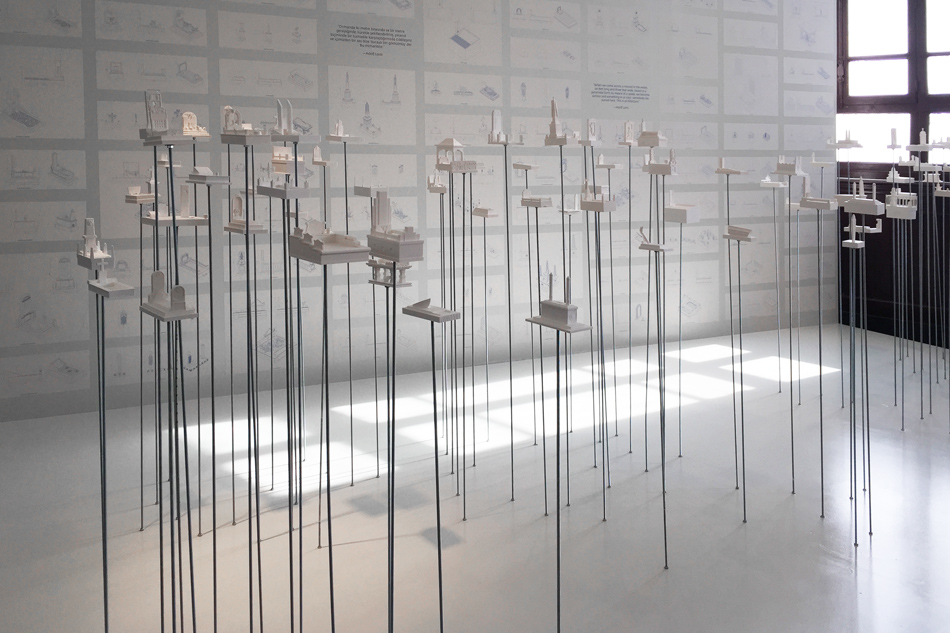
the visit by SO?
image © designboom
at the biennial’s opening in istanbul, designboom heard the thoughts of curators beatriz colomina and mark wigley, who explained the event’s theme in more detail.
designboom (DB): the biennale’s theme is ‘are we human?’, what topics does this cover?
mark wigley (MW): the biennale explores the intimate relationship between concepts of design and human. design always presents itself as serving the human, when its real ambition is to redesign the human. to talk about design is to talk about the state of our species. we live in a time, an amazing time, when everything, absolutely everything, is designed, from our carefully crafted individual looks to the surrounding galaxies of personal devices, new materials interfaces, network systems interfaces, data, chemicals, organisms and genetic codes.
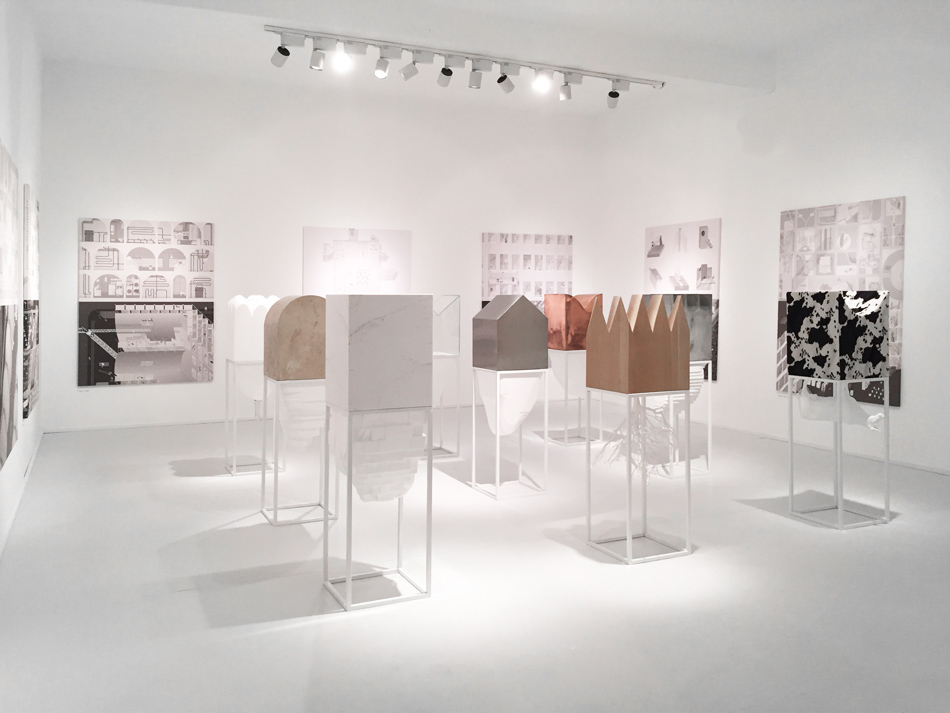
‘nine islands’ by NEMESTUDIO examines the under-conceptualized long span of architectural materiality. the exhibition showcases this through nine case studies looking at particularly lavish or widely used, building materials: marble, wood, glass, travertine, copper, aluminum, concrete, leather, and styrofoam.
image © designboom
MW (continued): the average day of the average person evokes the experience of thousands of layers of design. thousands of layers, probably within the first hour of your day. they reach to outer space, and there are those that reach deep into our bodies and our brains. we literally live inside design. if somebody says to you what is design, you say it’s what you’re living in, it’s what you’re standing on, it’s what you are breathing, it is what you are thinking. we live inside design like the spider that lives inside the web it has constructed from inside its own body. we live inside a world of design that we made from our body and our brain. design has become the world, there is no outside to the world of design.
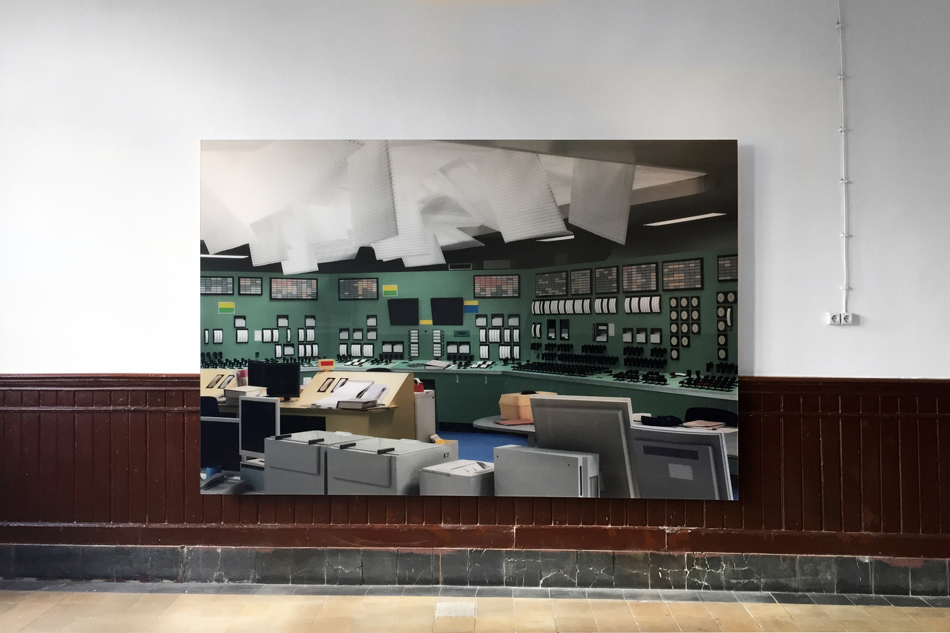
thomas demand’s ‘kontrollraum’ is a large scale photographic depiction of the control room of reactor number 1 at the fukushima reactor power plant in japan, right after the energy accident of march 11, 2011. according to estimates, the radioactive material released from this localized event has polluted one third of the earth. similarly to his earlier work, demand created the image by photographing a life-sized paper model that recreated the subject matter.
image © designboom
DB: how does this relate with particular regard to the human body?
beatriz colomina (BC): design is the most human thing about us, design is what makes us human. it is the basis of social life, from the very first artifacts to the exponential expansion of human compatibility. design also engineers inequality in new forms of neglect. more people than ever in history are forcibly displaced by war, lawlessness, poverty and climate. so this has the propositions, to go back, with this urgent challenge in mind, the propositions that are there. we wrote a polemical manifesto with eight propositions, and invited a galaxy of artists, designers, architects, theorists, choreographers, film makers, historians, archeologists, scientists, and collaborations with all of the above to respond to these propositions.
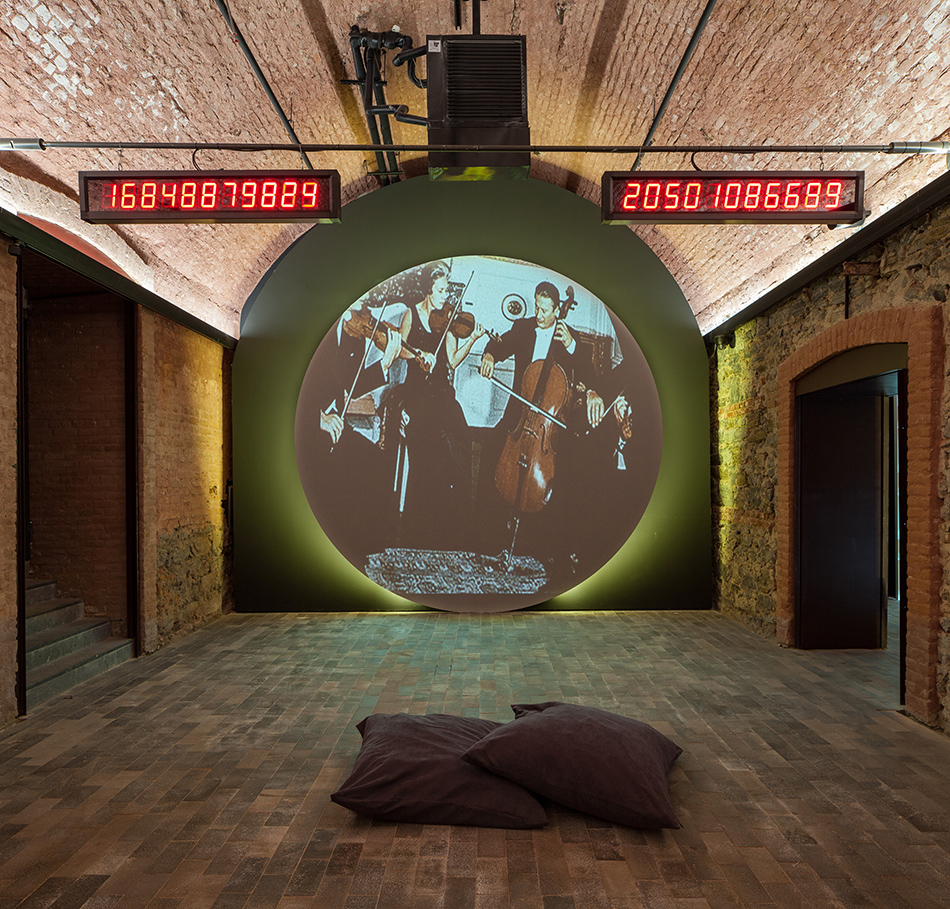
voyager — humanity in interstellar space by universal space program — rutger huiberts, evangelos kotsioris
image by sahir uğur eren
DB: so the world of design is influenced by different people in many different roles?
BC: what we are trying to say that this is not an exhibition only of designers, or architects, but all these different groups — archeologists, engineers — are part of the exhibition. each contribution is presented in the words of the author, and this is very important to us. we suspect the visitor also prefers to hear their voices rather than the usual framing by creators and critics.
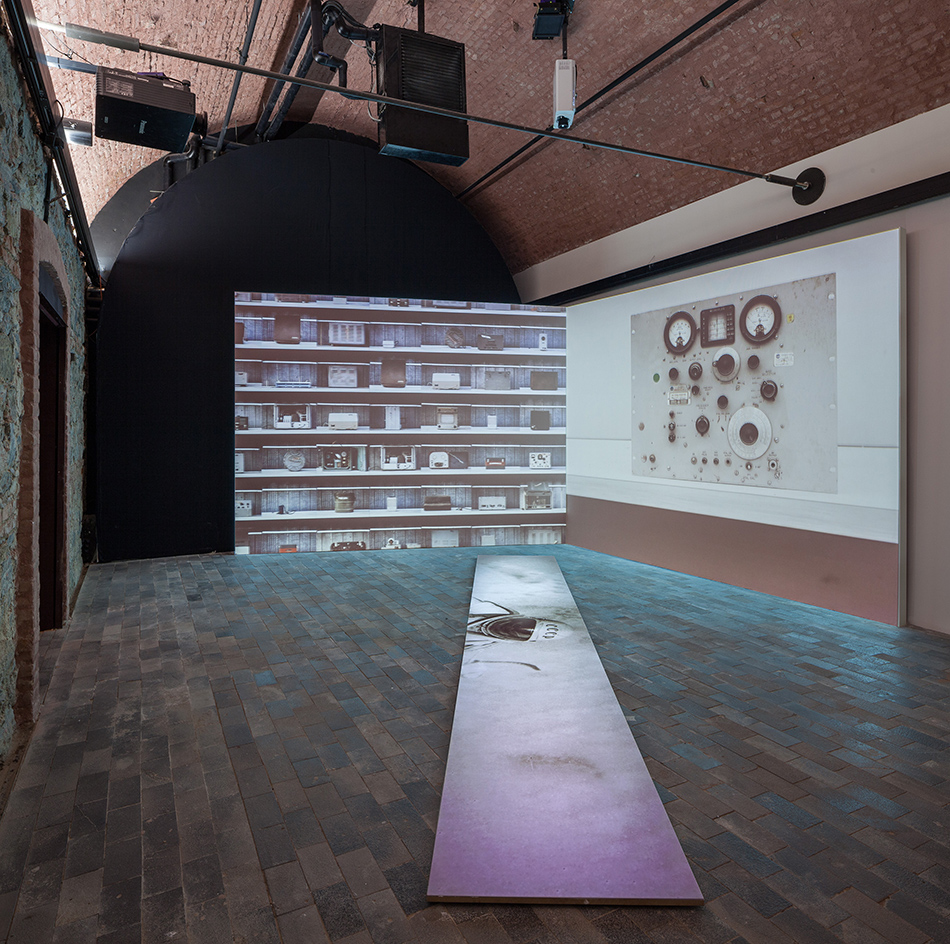
archaeology of things by pedro alonso, hugo palmarola
image by sahir uğur eren
DB: how are the exhibitions and installations organized?
BC: we have ‘clouds’ in which we have organized the exhibitions. so the works in the exhibition are not presented as isolated works in independent spaces, rather they open up in clouds of projects that are forcing the visitor to think about the interconnection between these things. the clouds are: ‘designing the body’, ‘designing the planet’, ‘designing life’, and designing time’. but of course these are not strict divisions, we think it’s more like different gates in a dense forest, as the visitors passes through each one of these gates the projects seem to be at first obviously related to the theme of the body or the planet, but as you go deeper into this forest the more the projects will seem to overlap with the ones that you entered through a different gate. so that everything then is interconnected — body, planet, life, and time.
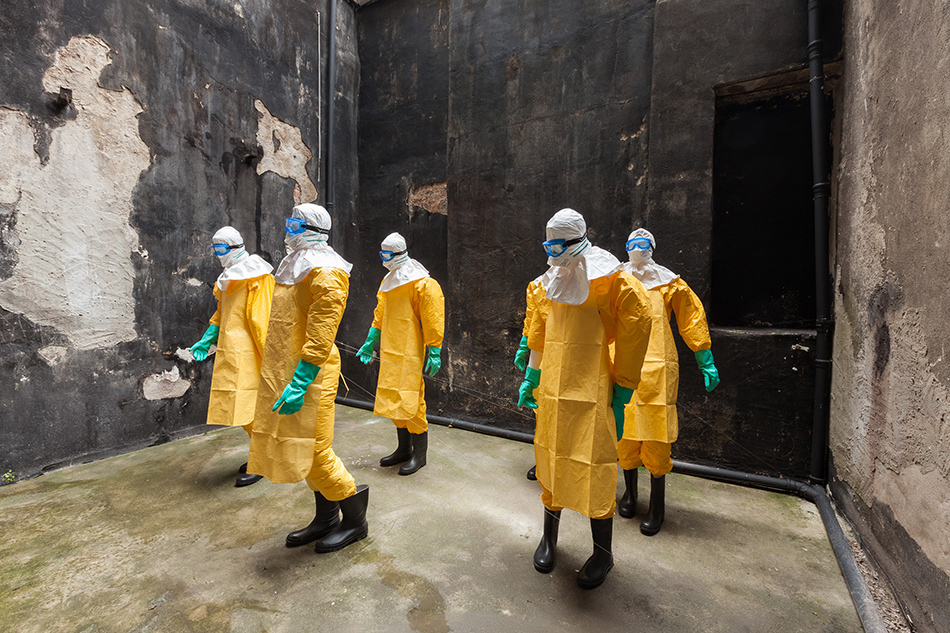
ebola by the curatorial team
image by sahir uğur eren
DB: can you take us through each of these ‘clouds’?
BC: the first one is ‘designing the body’. the human of course is never simply a human. tens of thousands of different species are suspended between its human body, and the body is itself suspended within a dense environment of countless species outside it. it is never clear where the human begins and ends. the body as you know if constituted by thousands and thousands of microbes, many of which have existed millions of years ago.
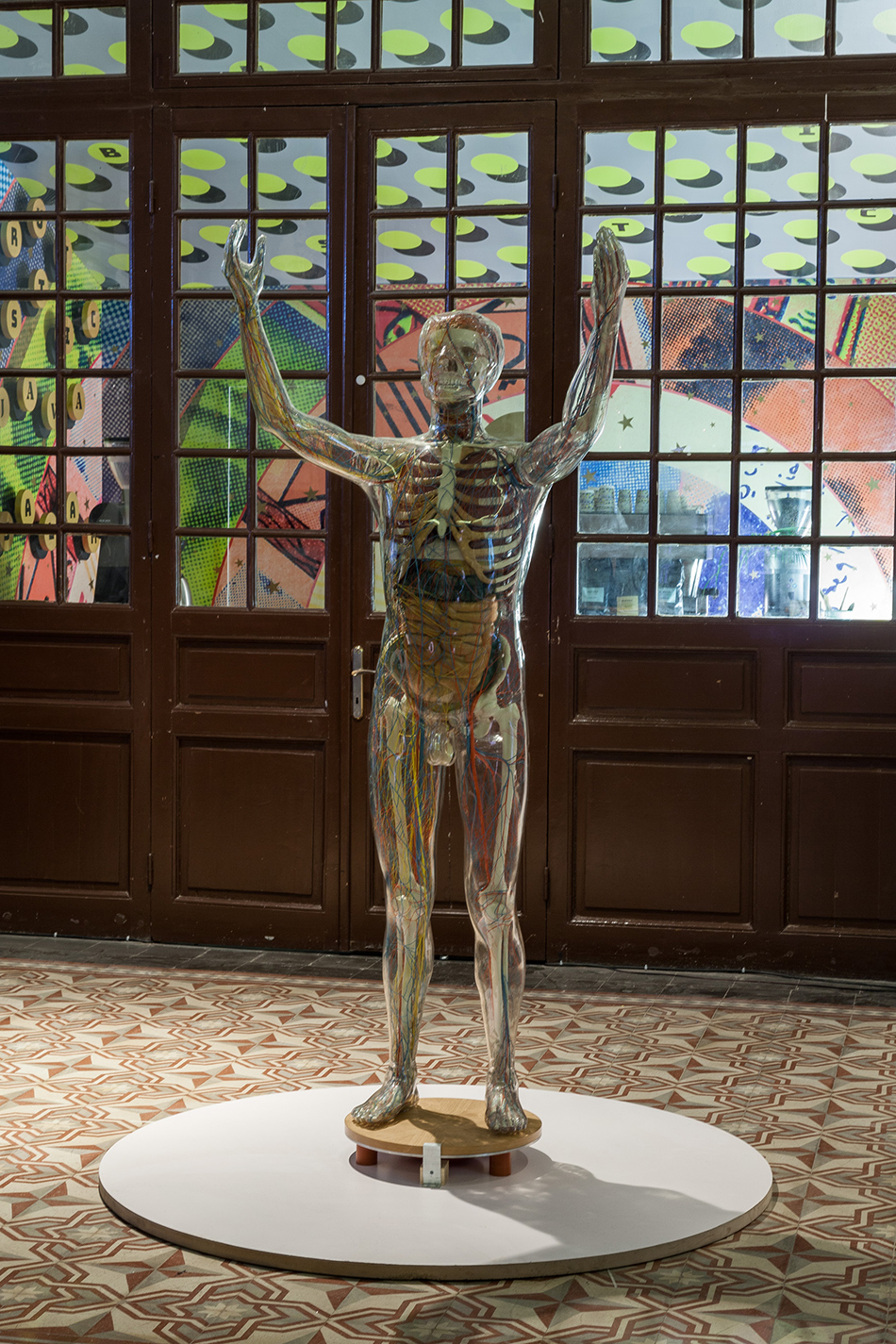
the transparent man by franz tschackert, see more about the anatomy model on designboom here
from the german hygiene museum in dresden
image by sahir uğur eren
BC (continued): only about 10% of ourselves is actually human, and only 1% of the generic material of us is human. and even that 1% comes from parallel species. I’ll give you an example, 1% of us is different from a chimpanzee, and just 10% is different from a cat. so basically the human is a mobile cross species collaboration and the collaboration is fluid. bodies are not given but artifacts that are designed. every mention of the body and the brain is continuously adjusted, augmented, or replaced. design is always a prosthetic, producing new human bodies by transforming old ones. the image of a single stable human figure is a fantasy, an effect of design rather than a starting point.
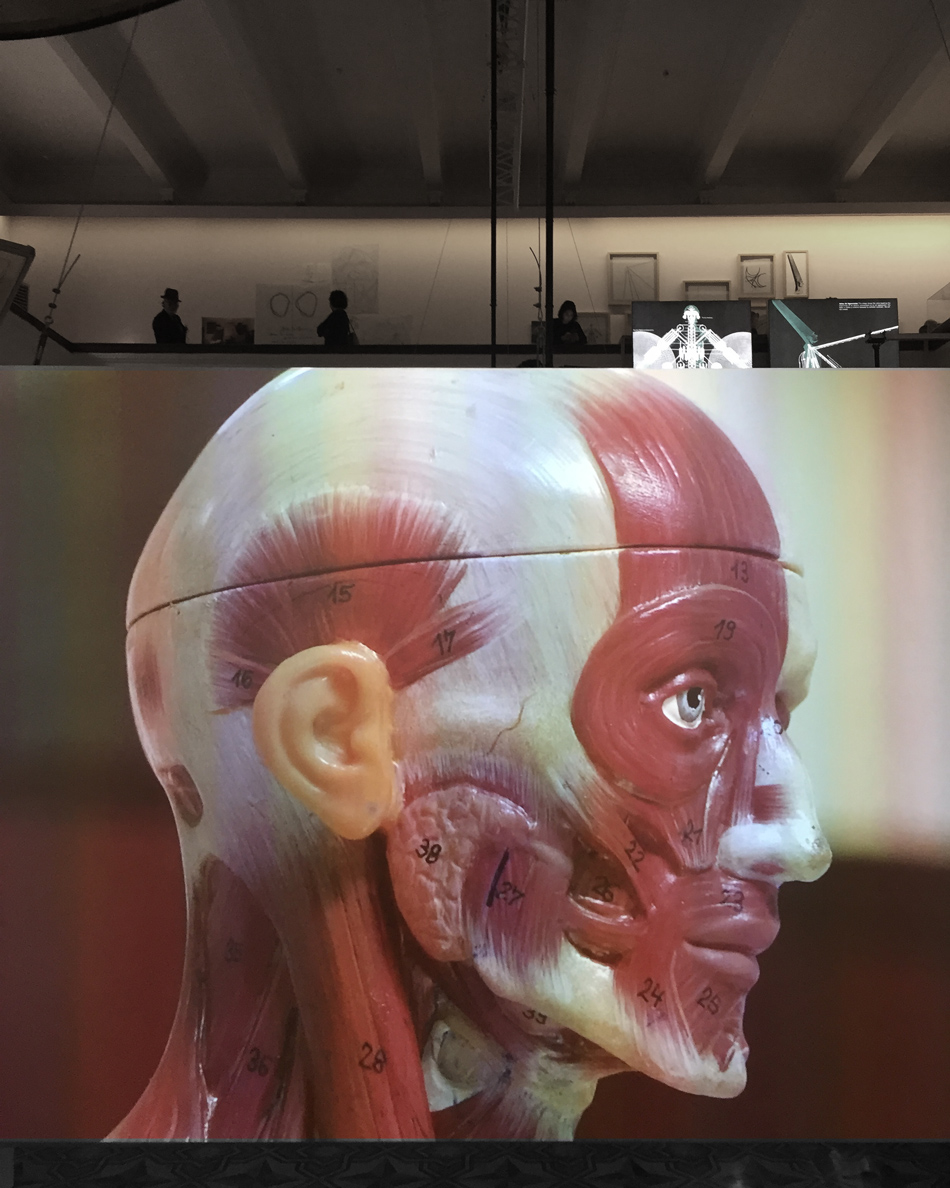
‘anatomy is a video shot at a medical school in istanbul,’ explains video artist ali kazma. ‘the students are examining and learning from a cadaver under the supervision of their professor. the dead body, as has been the case for many centuries, becomes a guide and model for learning the subtleties of the various systems within it.’
image © designboom
MW: the second cloud is called ‘designing the planet’. the human we are saying radiates design. but the human is a radiator of design, design is flowing from us, the imprint of our species is in every dimension of the environment from the rocks to the gene pools to the mainly invisible electromagnetic spectrum. the designs that mark human life are not just cultural and technical artifacts that eventually make their way into museums. they are the precarious movement of refugees, they are the collects of biodiversity, they are the global flows of information and resources, they are the holes in the ozone layer, they are the plastic that is everywhere in the pacific, they are the radioactive isotopes from the atomic testing in the atmosphere, and the black carbon which is absolutely everywhere in the air and the soil.
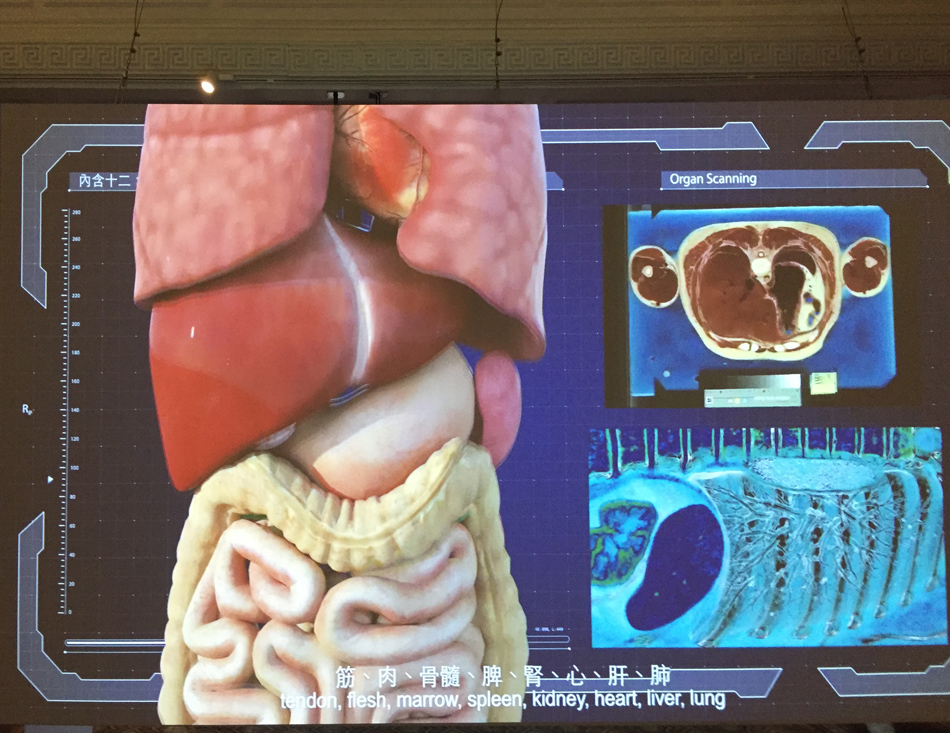
artist lu yang’s ‘delusional mandala’ is a digitized asexual avatar
see more about the project on designboom here
image © designboom
MW (continued): humans no longer move across a very small and thin layer of the planet, kind of nomadically, we don’t nomadically forage for resources, as if acting lightly of the very very vast stage. at this moment the human has become vast. we now encircle the planet with layer upon layer of techno-culutural mess, posing an ever greater threat to our own survival, along with that of most of our companion species.
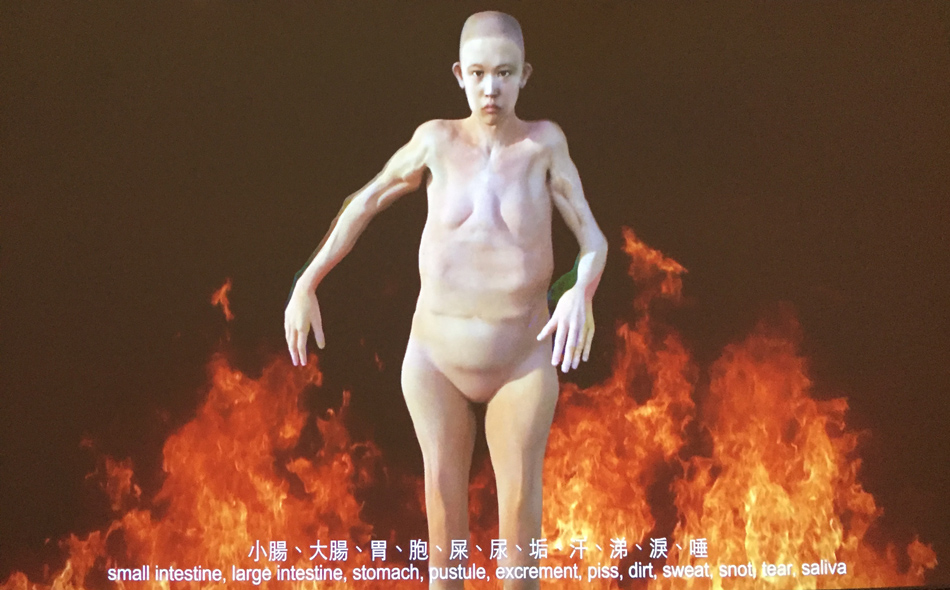
lu yang has used her own body as the starting point to create a transformational humanoid figure
image © designboom
BC: the next cloud is ‘designing life’. if design is uniquely human, and always designed for the human the human is also unique in designing life itself, carving new forms of mechanical, electronic and biological life. a thinking machine, indistinguishable from a human, may have already been accomplished. humans are increasingly asked by machines to prove that they are human. ‘are you a human? are you not a robot?’ whole new forms of life are produced in laboratories with genetic editing techniques.
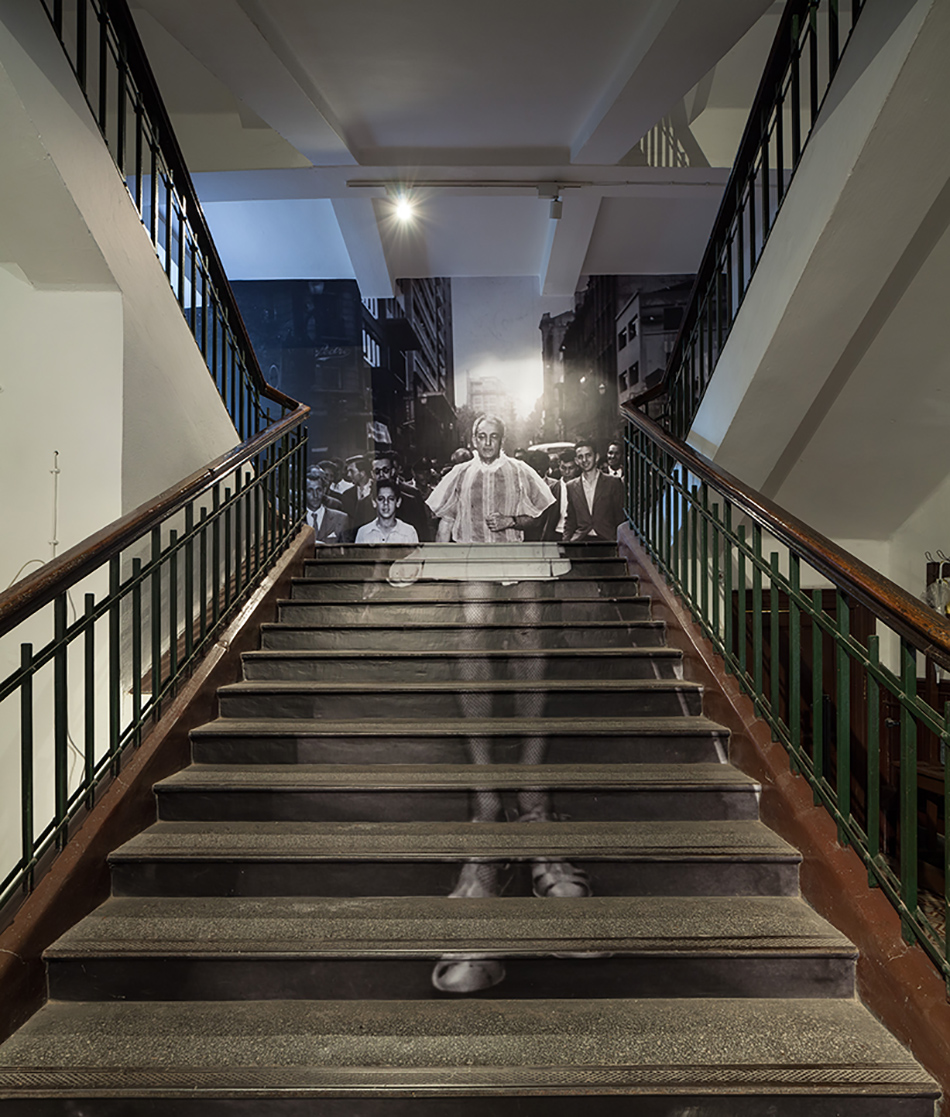
the anthropophagic body and the city: flavio de carvalho by jose lirá
image by sahir uğur eren
BC (continued): with bio-design the sense of humans designing the self and every element of the living environment is direct and palpable. the human brain has transformed everything it encounters, new organisms are constantly invented, and genetic hybrids of humans and other animals are already here. this fusion of machine, organisms, computations and genetic that is moving from the laboratory into every day life, the land, the air and the oceans forces urgent ethical questions that call for a public conversation about design.
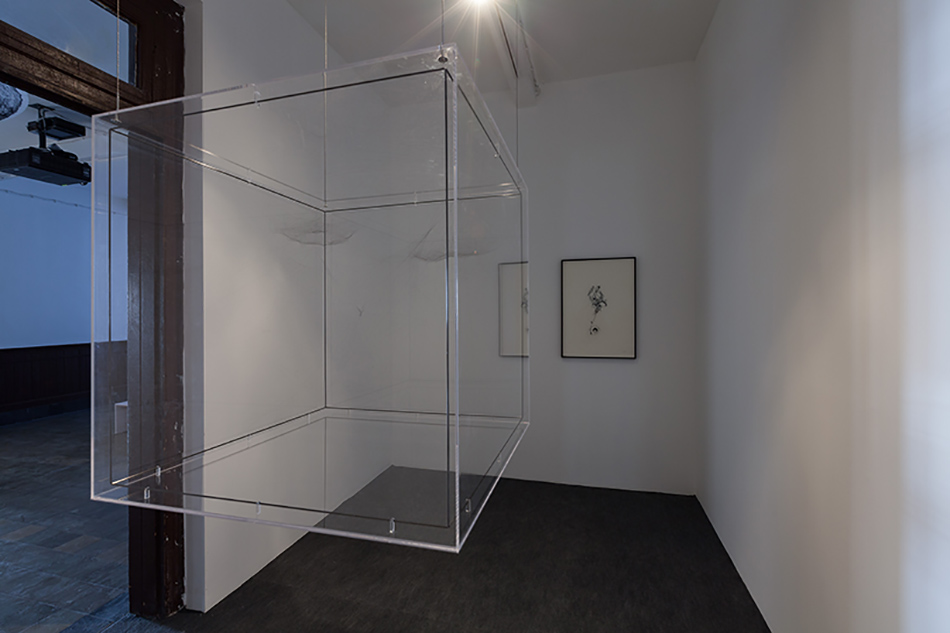
spidernauts…dark webs by tomás saraceno
image by sahir uğur eren
MW: the final cloud is ‘designing time’. what is design? design is what you are standing on. in this case a platform on the floor of a school, on the street of a city, istanbul, layer upon layer upon layer of design, maybe no other city in the world can you dig deeper and still find design than here. so to think about design, and to be serious about design, it means you must be archaeological, you must go down through the layers, you have to dig in the ground, literally dig in the ground.
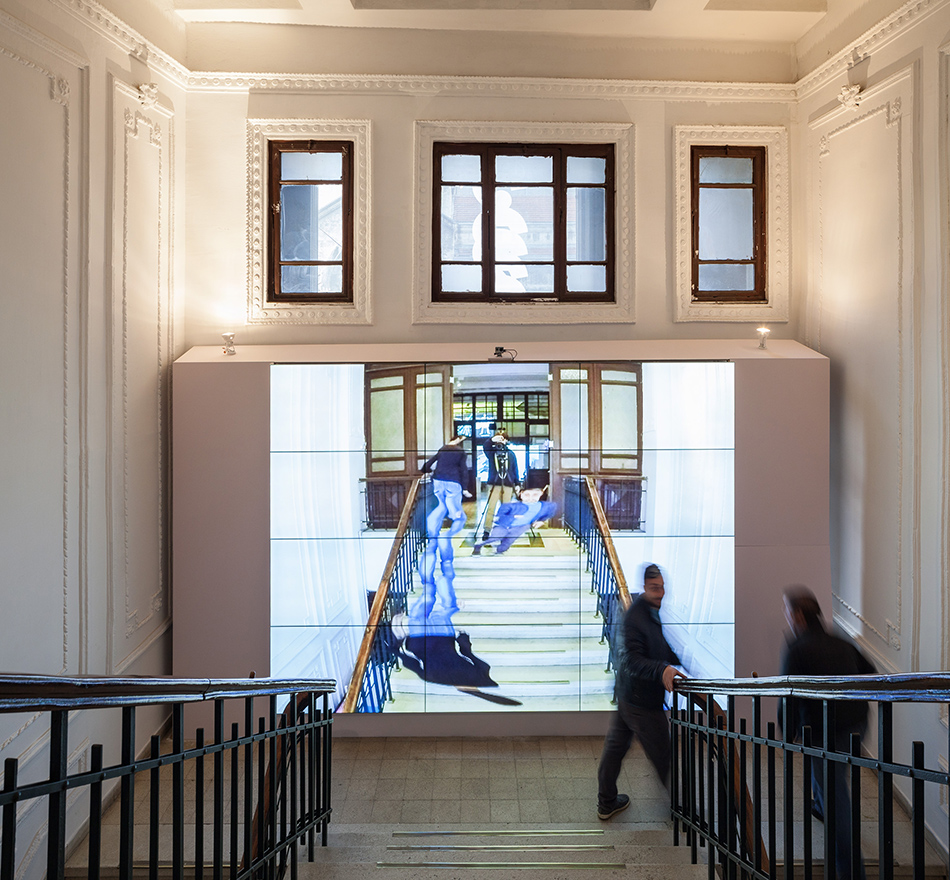
city of abstracts by william forsythe
image by sahir uğur eren
MW (continued): is social media design media? of course. you have to dig like an archaeologist, you have to document, you have to dissect, you have to discuss, and of course if what we said to you is true, that the human being has expanded itself with design to cover the whole planet, when you dig you are digging into yourself — I know this is not a comfortable thought, you but you are literally digging into your species. archaeology is kind of reverse engineering of design, think about it!
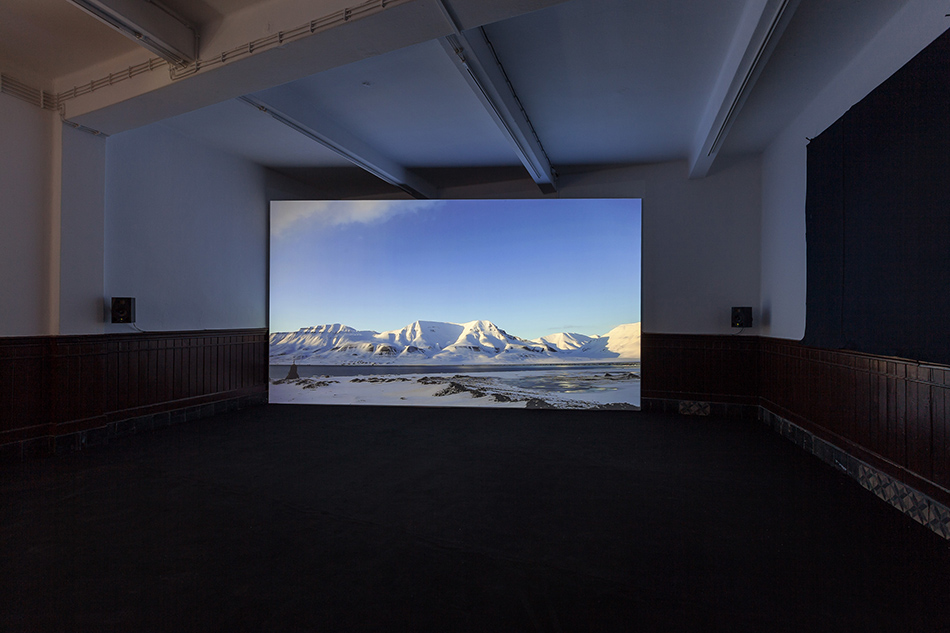
safe by ali kazma
image by sahir uğur eren
DB: so in some ways this is an archaeological exhibition?
MW: an archaeologist looks at an object, has only the object, and tries to imagine what kind of life, what kind of life, what kind of economy, what kind of technology was sustaining this object. archaeology is therefore always about design, it’s all about design. archaeologists are design experts, they may be the real design experts. archaeologists treat techno fossil that they find as evidence of human intentions they look for the human in the object. objects show us something about ourselves that we didn’t expect, and as a result we have a new idea.
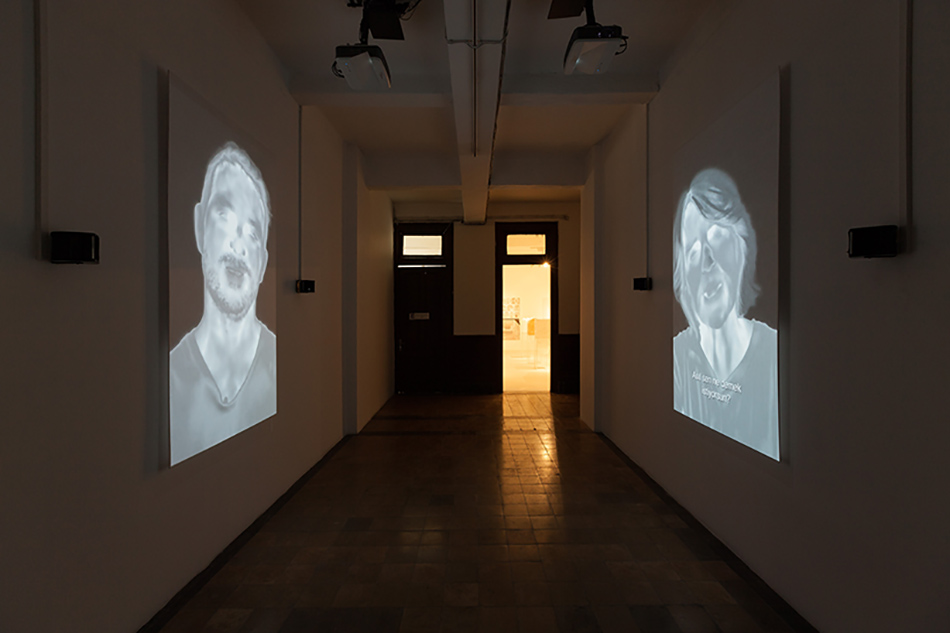
unspoken by diller scofidio + renfro
image by sahir uğur eren
MW (continued): what we are saying in this exhibition is what is unique of the human, of all the species, is that we look at objects, and are surprised by objects, and then we come up with a new idea for a new kind of object. every other species when it has figured out how to do something it does it the same way for a million years.
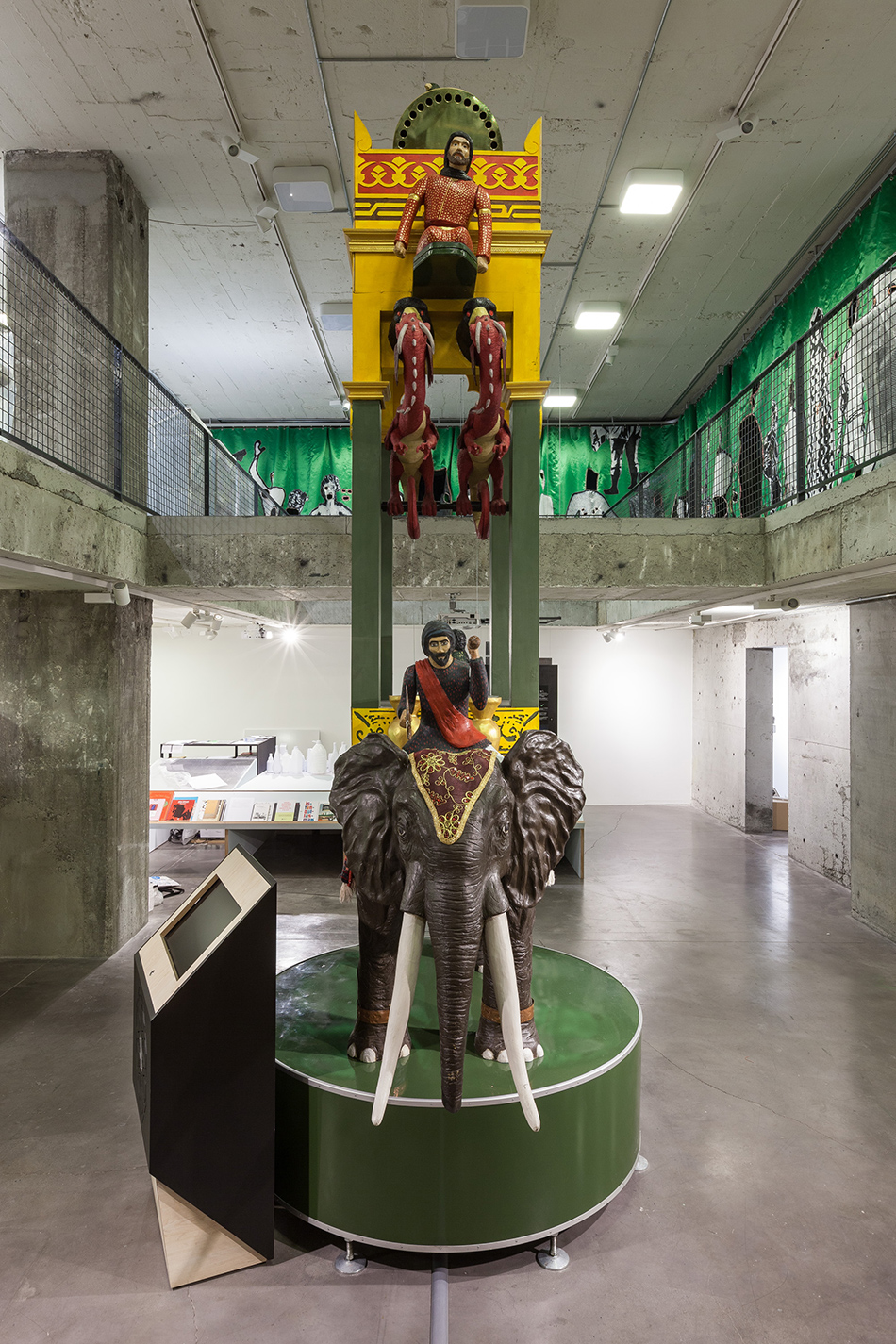
elephant clock by jussi parikka, ayhan aytes
image by sahir uğur eren
MW (continued): we also make things that don’t work, and then we are puzzled by them. so the reason we have covered the whole planet in design is that we are very happy to make objects that we don’t understand. objects that surprise us, they mystify us, they confuse us, and they delight us — and we never stop making them. we think this is an archaeological exhibition, that’s why we launched the project in the istanbul archaeological museum. we think archaeology is the science of learning how the human being looks at itself, is surprised by what it sees and invents things. we are the inventing species.
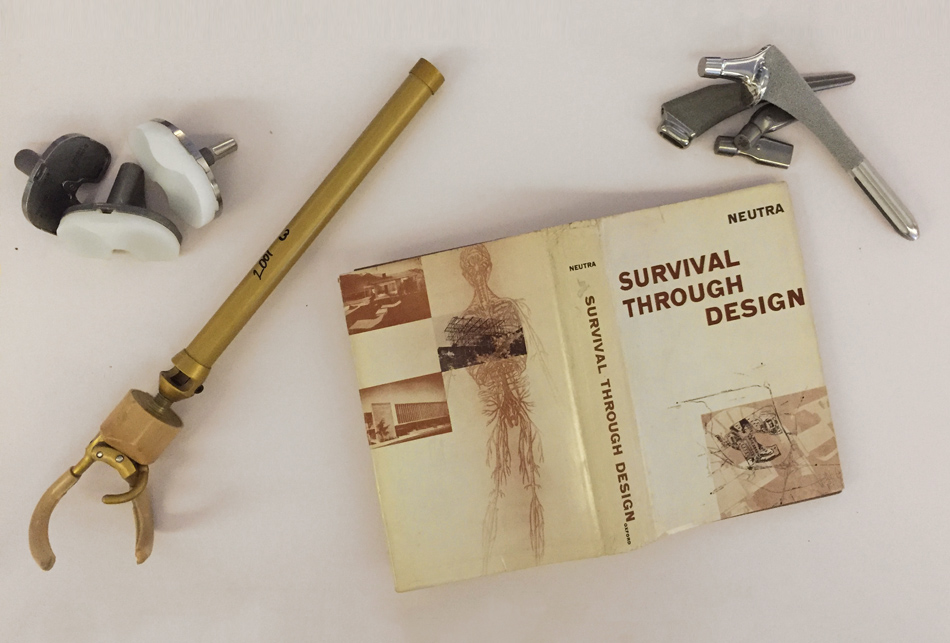
the istanbul design biennial runs until november 20, 2016
image © designboom
Save
Save
Save
Save
Save
Save
Save
Save
Save
Save
Save
Save
Save
Save
Save
Save
Save
Save
Save
Save
Save
Save
Save
Save
Save
Save
Save
Save
Save
Save
Save
Save
Save
istanbul design biennial 2016 (5)
PRODUCT LIBRARY
a diverse digital database that acts as a valuable guide in gaining insight and information about a product directly from the manufacturer, and serves as a rich reference point in developing a project or scheme.
